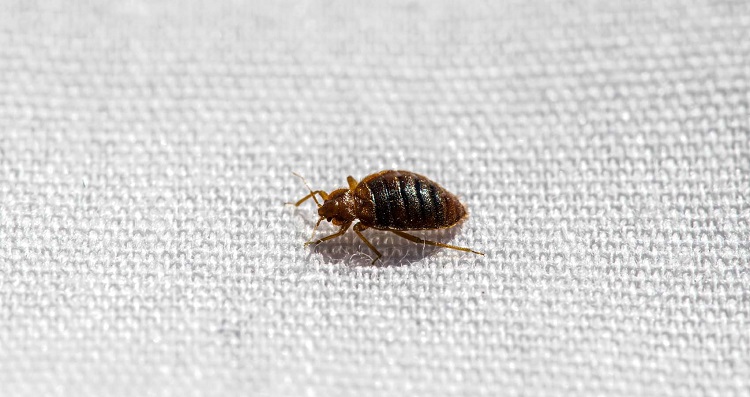Bed bugs are a nuisance that can cause significant discomfort and health issues. These tiny, nocturnal pests hide in cracks and crevices, making them difficult to detect and eliminate. Here are practical tips to protect your home from bed bugs and maintain a pest-free environment.
Table of Contents
Recognizing Bed Bug Signs
Bed bugs are elusive but leave behind telltale signs. Look for small, reddish-brown bugs, tiny white eggs, or shed skins around mattress seams, headboards, and furniture. Other signs include itchy, red bites on the skin and tiny blood stains on your sheets and pillowcases. A musty odor in a room can also indicate a severe infestation. Get more detail regarding bed bugs by checking out sources like edmentum.net.
Prevention Tips
Preventing bed bugs from entering your home is the best defense. When traveling, inspect hotel rooms thoroughly, focusing on the bed, headboard, and furniture. Keep luggage elevated and away from the bed. Upon returning home, wash and dry clothes on high heat immediately.
Home Maintenance
Regularly vacuum your home, paying special attention to cracks and crevices in furniture and baseboards. Use a mattress protector to encase your mattress and box spring, which can help prevent bed bugs from taking up residence. Additionally, reduce clutter in your home to minimize hiding spots.
Dealing with Infestations
If you suspect a bed bug infestation, act quickly. Start by isolating the affected areas. Launder bedding, curtains, and clothing on high heat. Vacuum thoroughly, including the mattress and surrounding areas. Dispose of the vacuum bag outside immediately to prevent any bed bugs from escaping.
Professional Help
For a comprehensive solution, consider contacting Saela Pest Control. They offer expert inspections and treatments tailored to eliminate bed bugs effectively. Using advanced techniques and eco-friendly products, Saela Pest Control ensures your home is thoroughly treated and safeguarded against future infestations.
Home Inspection and Regular Monitoring
Regularly inspecting your home is crucial for early detection of bed bugs. Check your bedding, mattress seams, and furniture joints frequently. Use a flashlight to inspect dark crevices where bed bugs might hide. Early detection can make eradication easier and prevent the spread of bed bugs to other areas of your home.
DIY Bed Bug Treatments
Several do-it-yourself methods can help control minor bed bug infestations. Here are a few options:
Steam Cleaning
- High-temperature steam can kill bed bugs on contact. Use a steam cleaner on mattresses, upholstery, and other infested areas.
Diatomaceous Earth
- This natural powder dehydrates bed bugs. Apply a thin layer around infested areas and leave it for several days before vacuuming.
Heat Treatment
- Bed bugs cannot survive high temperatures. Wash infested items in hot water and dry them on the highest heat setting. For non-washable items, use a clothes dryer or place them in black plastic bags in direct sunlight.
Chemical Treatments
Over-the-counter insecticides can be effective for treating bed bugs, but they must be used with caution. Always follow the label instructions and consider the following tips:
Select the Right Product
- Choose insecticides specifically labeled for bed bugs. These products are formulated to be effective against these pests.
Apply Carefully
- Apply insecticides to cracks, crevices, and other hiding places. Avoid spraying directly on bedding or areas where children and pets might come into contact.
Combine Methods
- Combine chemical treatments with non-chemical methods like steam cleaning and vacuuming for better results.
Preventing Reinfestation
Once you have dealt with a bed bug infestation, it’s important to take steps to prevent them from returning. Here are some preventive measures:
Regular Cleaning
- Continue to vacuum regularly, paying attention to areas where bed bugs are likely to hide. Wash bedding and linens frequently.
Protect Your Bed
- Use bed bug-proof mattress and box spring encasements. These covers trap any remaining bed bugs inside and prevent new ones from entering.
Monitor for Signs
- Keep an eye out for any signs of bed bugs, such as bites, blood stains, or droppings. Early detection is key to preventing a full-blown infestation.
Be Cautious with Secondhand Items
- Inspect secondhand furniture, clothing, and other items carefully before bringing them into your home. Bed bugs can easily hitch a ride on used items.
Travel Precautions
Traveling can expose you to bed bugs, which can then be brought back to your home. Here are some tips to avoid bringing bed bugs home from your travels:
Inspect Hotel Rooms
- Upon arrival, inspect the mattress, headboard, and furniture for signs of bed bugs. Keep luggage off the bed and use a luggage rack.
Use Protective Bags
- Use bed bug-proof luggage liners or encasements to protect your belongings. Seal dirty laundry in plastic bags.
Wash and Dry Clothing
- When returning home, immediately wash and dry all clothing on high heat, even items that were not worn.
Conclusion
Protecting your home from bed bugs involves vigilance, preventive measures, and quick action when an infestation is detected. Regular inspections, proper cleaning, and the use of protective covers can help keep bed bugs at bay. For those looking for effective pest control solutions, insights from the Design Mode 24 can provide valuable information on products and services that enhance your home’s defenses against pests. By following these tips, you can ensure your home remains a comfortable and pest-free environment.

